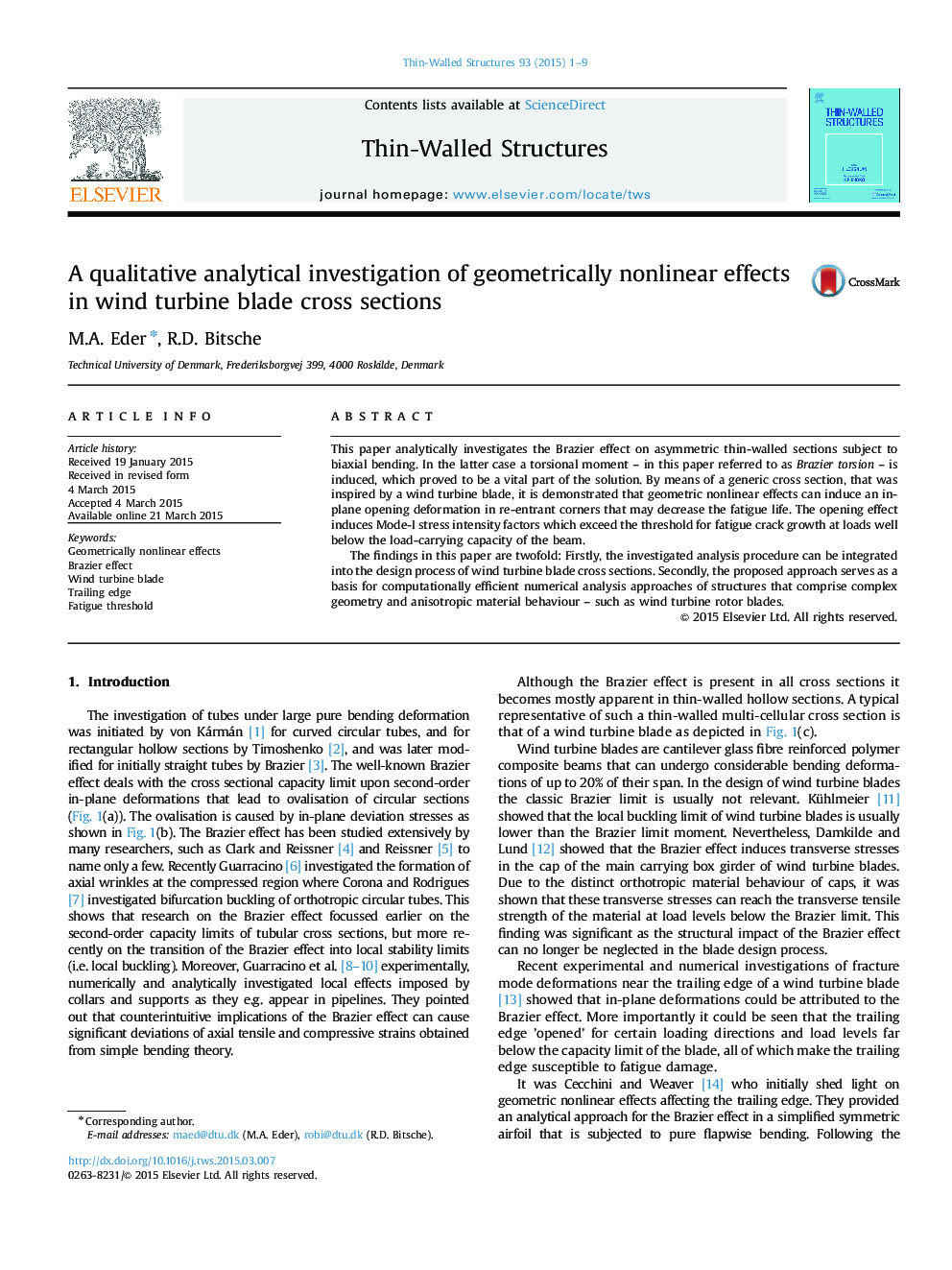| Article ID | Journal | Published Year | Pages | File Type |
|---|---|---|---|---|
| 308455 | Thin-Walled Structures | 2015 | 9 Pages |
•The Brazier effect induces stress intensity factors in curved, thin-walled beams under biaxial bending which can exceed the fatigue threshold.•A second order bend-twist coupling was found to be a vital part of the solution.•An increase of the camber of airfoils decreases the fatigue lifetime of the trailing edge joint.•The proposed slice approach facilitates computationally efficient fracture analysis of wind turbine blade cross-sections.
This paper analytically investigates the Brazier effect on asymmetric thin-walled sections subject to biaxial bending. In the latter case a torsional moment – in this paper referred to as Brazier torsion – is induced, which proved to be a vital part of the solution. By means of a generic cross section, that was inspired by a wind turbine blade, it is demonstrated that geometric nonlinear effects can induce an in-plane opening deformation in re-entrant corners that may decrease the fatigue life. The opening effect induces Mode-I stress intensity factors which exceed the threshold for fatigue crack growth at loads well below the load-carrying capacity of the beam.The findings in this paper are twofold: Firstly, the investigated analysis procedure can be integrated into the design process of wind turbine blade cross sections. Secondly, the proposed approach serves as a basis for computationally efficient numerical analysis approaches of structures that comprise complex geometry and anisotropic material behaviour – such as wind turbine rotor blades.
